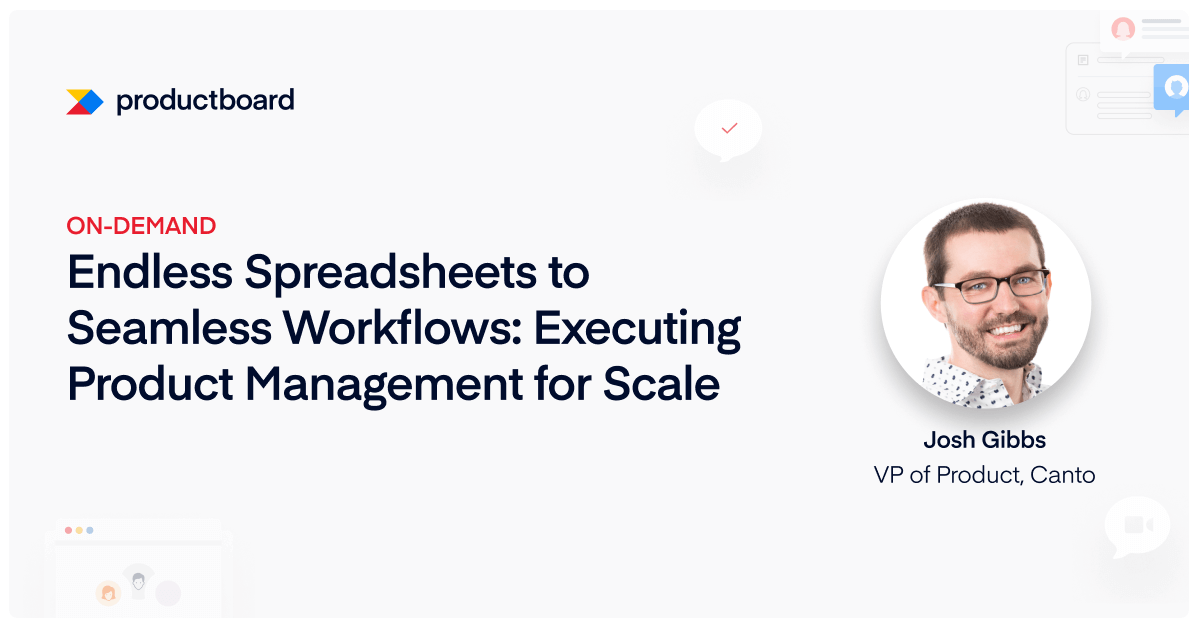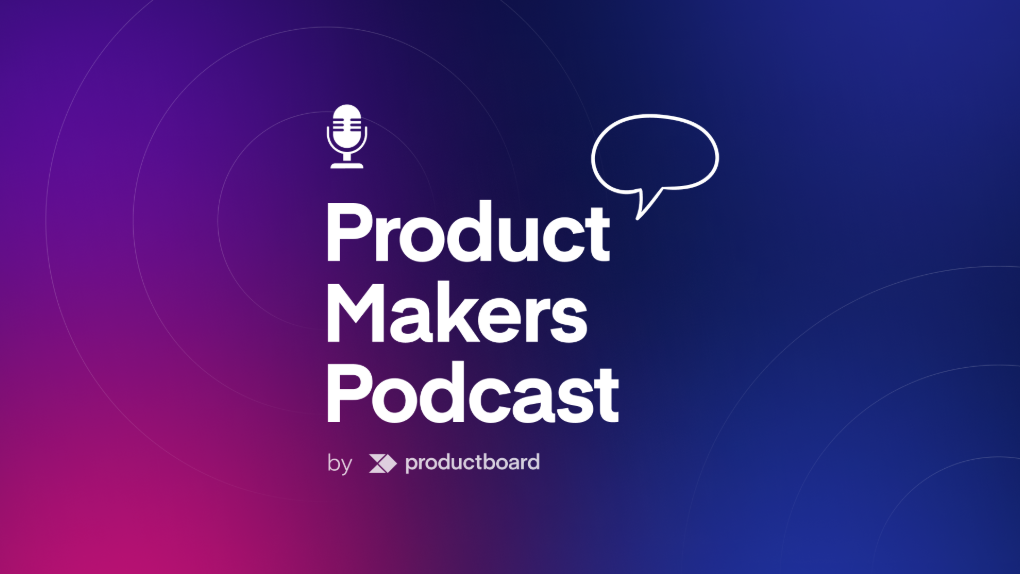3 key ways to scale your product management practices

Go from endless spreadsheets to seamless workflows
If 2022 found you and your team frustrated by a never-ending sea of outdated spreadsheets, a calendar packed with lengthy meetings, and plenty of cross-functional tension to top it all off – make it a priority to streamline your processes in 2023.
Last month, Canto’s VP of Product, Josh Gibbs, joined us for an AMA about new and more efficient ways of working. You can watch the session on-demand here, or keep reading to see where you can increase efficiency in your workflows, including:
- Rebuilding product processes
- Easing cross-functional dynamics
- Speeding up releases
1. Rebuilding product processes
The hardest part of product management might not be what you think it is.
“The hardest thing in product management? It’s not doing discovery. It’s not getting feedback – you probably have an overabundance of feedback. It’s the organizational challenge of the agreed upon processes.”
– Josh Gibbs, VP of Product, Canto
That first step according to Josh: figure out what the processes are, be sure everyone agrees on them, and then write them down in a place that’s easy for everyone to both understand and access.
Second, you need everyone to understand exactly what the product team’s function is at your organization. Make sure everyone understands who you are and what you’re responsible for, especially the stakeholders you and your team will need to work with the most.
Third, you need a tool of record (like Productboard!) so that you have one central place where all of your data, all of your feedback – both from customers and cross-functional teams – ends up. That will save you from doing double the work, creating double the content. It’s one place for everyone to contribute what they know and access what they need to know.
Finally, practice your product craft. Join a community like Product Makers to connect and discuss Product Excellence with other product professionals. Get certifications to help you build a deeper knowledge of all things product, especially on systems your current role or organization is heavily dependent on. The deeper your knowledge goes, the better you can iterate on product processes from every angle.
2. Easing cross-functional dynamics
As workplaces are now often a mixture of in-person, hybrid and remote work with colleagues spread all over the globe, how do we better work with each other?
One way is to find champions of product on every team, in every time zone – whichever makes the most sense for the way your organization is structured – and be sure they’re always up to date on current product roadmaps and plans. Be sure they can offer tailored information to their department, a specific project they’re working on or meeting they’re attending.
Another way to ease cross-functional dynamics is to determine when something is best done synchronously (are you in time zones that work well for regular meetings?) or asynchronously (do you have an update you can send in the form of a two-minute Loom video everyone can watch and forward as needed?).
With globally distributed companies and increased demands on everyone’s time and energy, it’s important to save synchronous time for the most important meetings and work. Figuring out what can be done asynchronously, including pre-work for some synchronous meetings, can save everyone a lot of time and increase productivity.
3. Speeding up releases
The most important question to ask when it comes to speeding up releases is this one: is everyone aligned on what speeding up releases means? That’s going to mean different things for different teams. Related to that, does every team have the bandwidth necessary to make this happen?
One approach is to make speeding up releases a corporate OKR, one every team is responsible for achieving. Then, decide how you’re going to measure it. For developers that might mean using agile metrics. Alternatively, look at the scope of projects and cut back on some requirements to get to release faster. While no one ever wants to do this, it’s often the case that too much was planned for the initial release anyway, no matter how much it was refined.
During your sprint retrospectives, make the topic of “speeding up releases” the main topic discussed. Make backlog action items to actually create tooling to help speed up releases, like automatic deployments or figuring out a better way to collaborate and document processes. Spend time trying to make yourself faster – it doesn’t just happen, you have to devote yourself to it!
See how Josh drove a transformation firsthand at Canto
We hope this advice can help you hit the ground running in 2023. If you want to see and hear it all in Josh’s own words, check out the full recording. There’s so much more, including advice on how product leaders can help their teams continue to level up their knowledge and skills for their roles and careers.
A special thanks to Josh Gibbs, the Vice President of Product at Canto, for sharing his time and excellent insights with us. You can learn more about Josh and the transformation that he successfully led at his company by reading Canto’s customer success story.
About Josh Gibbs
In his role as Vice President of Product at Canto, Josh Gibbs helps build tools to enable content creation teams to optimize their content production pipelines. In his career, he’s built product teams from the ground up, implemented disciplined growth strategies for companies like HP, VMware, Cisco, and Salesforce, and has led several transformation initiatives to help companies scale their technology and development capabilities.




